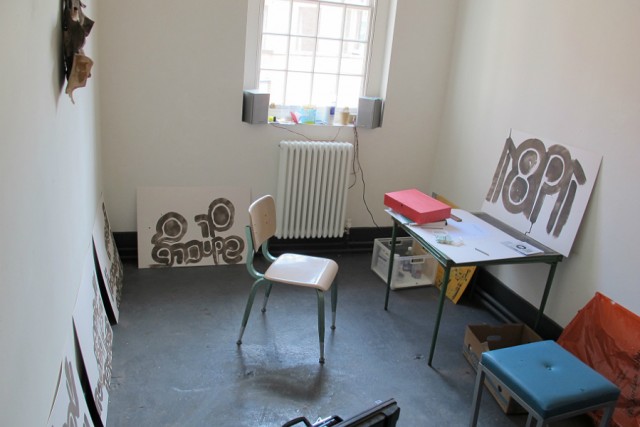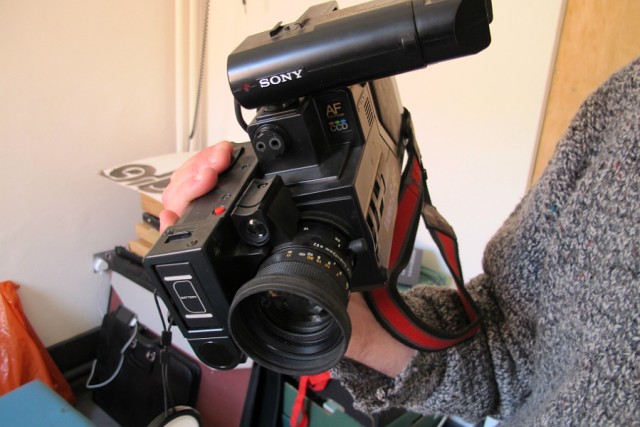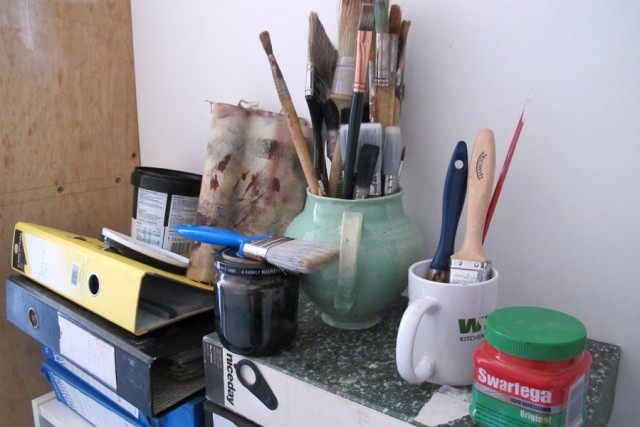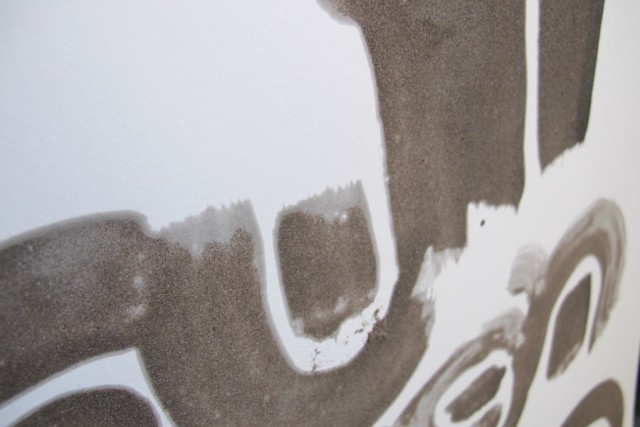Studio Series: Juan Cruz
Juan Cruz, Director of Liverpool School of Art and Design (LSAD), invites us in for a look around his studio space…
Please describe your space. It’s in the Bluecoat, which is a gallery and also an arts centre with a cafe and restaurant. The virtue of the space is that it’s very private, it’s quite small, but the ceiling’s quite high. It’s got a window, and central heating, so it’s very comfortable. It’s also part of a social complex and right in the middle of town. Because I don’t have too much time to spend in the studio, it always feels like an easy place to get to. It’s just a nice place to be.
What work do you do here? I keep all of my archive here, and folders, and books and things, and records of work from the past. I’ve been working on some wall drawings that I sold to the government art collection about ten years ago and they were installed in the embassy in Moscow, and they’re drawn on the wall. But they’ve been through a number of decorations of the building, and we’ve been talking about the maintenance of the works. In a way, trying to find a solution for the longevity of the work that didn’t undermine the conceptual premise of this drawing being made on a wall. I’ve been using the studio to think about those problems and how that might work. And then I’m doing a show in Leeds this year after September, and then in London at a similar time. In the past I made a lot of work with video and text based work that required technology or that was printed. What I’ve been trying to think about recently is how to work with certain materials that aren’t processed digitally or that require technology – works that you don’t need to plug in. I’ve been making these plates (pictured) to be printed with glue and carborundum – the idea is when they’re inked up, the ink will sit on these abrasive bits and then be printed off on paper. The carborundum colour – a lovely brown – reminded me of these Czech shoes I’ve had here in a bag, a half-finished work. In a way that’s partly what I really like about the studio – you give yourself the opportunity to make work that responds to things that happen, that you may not really have expected to be significant. That’s increasingly important to me; that you can be in a space that’s somewhat secluded and you can follow your nose a bit, and making things that every day are truly insignificant and giving yourself the time to pursue that. So sometimes it’s about looking back, sometimes looking forward, sometimes kind of being in the moment and trying to do something. Because my job’s quite serious, I guess, I don’t really want my art to be. It’s important to me that it retains some kind of lightness.
How many hours a week do you spend here? It varies from none, to at most five or six. It’s pathetic really, but … when I’ve been in situations before when I’ve had all my time funded to just be in the studio and do my work, I haven’t been very productive. The burden of knowing that you’re there all the time, it’s tricky when it becomes a job. I quite like just doing what you can. I’m quite interested in limitations; its more interesting to see what you can do with the means at your disposal. That possibility of ‘needs must’ is quite interesting.
What helps you work? I suppose partly the work itself. It’s the way in which that making work makes you think and feel about things. Memories; what it reminds you of. Very meaningful moments of my life have been about making things, and working, and its often hard to remember them unless you are working. So I think its about that, it’s about making sense of yourself, and being able to recognise yourself actually. If I spend too long not working, I find it’s really hard to remember what I am or who I am. I’ll spend too long thinking about cars or whatever! Obsessing about other things.
Describe your three favourite possessions in the studio. This is an old video camera, an old Sony, it’s my grandfather’s (pictured). I’ve used this in making video as it gives a very warm image. I plug it into a DV camera. I’ve got a large format slide-projector, it projects 1-20 slides, which I used for a show in the Tabernacle, Notting Hill, years ago. The chair and the table – I bought those in Amsterdam in 1998 for a show. All my favourite things are in here! These three in particular have sentimental attachments.
If your studio could speak, what would it say? I miss you.
If there was any important advice you could share with other artists, what would that be? That’s really hard. Umm. I think it’s about honing one’s capacity to listen to oneself … and not ignoring it. You often ignore your inner voice in peril, I think, sometimes. Because you’ve got to recognise yourself in your work; however much you may be guided by advice and what other people tell you, unless you recognise yourself and you can live with yourself through your work, you’ll be lost. So I think that’s really important.
www.mattsgallery.org/artists/cruz/exhibition-3.php









